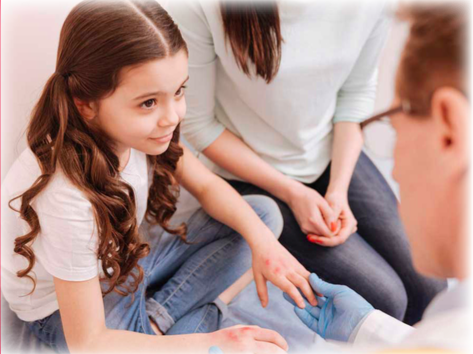Until recently, the common type of diabetes in children and teens was type 1. It was called juvenile diabetes. With Type 1 diabetes, the pancreas does not make insulin. Insu- lin is a hormone that helps glucose, or sugar, get into your cells to give them energy. Without insulin, too much sug- ar stays in the blood.
Now younger people are also getting type 2 diabetes. Type 2 diabetes used to be called adult-onset diabetes. But now it is becoming more common in children and teens, due to more obesity. With Type 2 diabetes, the body does not make or use insulin well. Over time, high blood glucose can lead to serious problems with your heart, eyes, kid- neys, nerves, and gums and teeth.
Children have a higher risk of type 2 diabetes if they are overweight or have obesity, have a family history of diabe- tes, or are not active. Children who are African American, Hispanic, Native American/Alaska Native, Asian Ameri- can, or Pacific Islander also have a higher risk. To lower the risk of type 2 diabetes in children
• Have them maintain a healthy weight
• Be sure they are physically active
• Have them eat smaller portions of healthy foods
• Limit time with the TV, computer, and video
Children and teens with type 1 diabetes may need to take insulin. Type 2 diabetes may be controlled with diet and exercise. If not, patients will need to take oral diabe- tes medicines or insulin. A blood test called the A1C can check on how you are managing your diabetes.
Diabetes in Children and Teens
Published on

